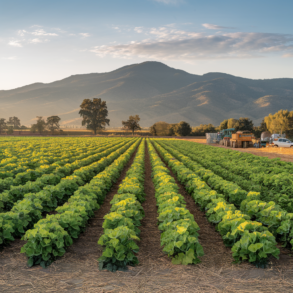By astronomical convention, the four seasons can be determined by the solstices—the points in the orbit of maximum axial tilt toward or away from the Sun—and the equinoxes, when Earth rotational axis is aligned with its orbital axis. In the Northern Hemisphere, winter solstice currently occurs around 21 December; summer solstice is near 21 June, spring equinox is around 20 March and autumnal equinox is about 22 or 23 September. In the Southern Hemisphere, the situation is reversed, with the summer and winter solstices exchanged and the spring and autumnal equinox dates swapped.
A planet that can sustain life is termed habitable, even if life did not originate there. Earth provides liquid water—an environment where complex organic molecules can assemble and interact, and sufficient energy to sustain metabolism.
Earth has resources that have been exploited by humans.
Large deposits of fossil fuels are obtained from Earth crust, consisting of coal, petroleum, and natural gas. These bodies form concentrated sources for many metals and other useful elements.
Large areas of Earth surface are subject to extreme weather such as tropical cyclones, hurricanes, or typhoons that dominate life in those areas. From 1980 to 2000, these events caused an average of 11,800 human deaths per year. Many places are subject to earthquakes, landslides, tsunamis, volcanic eruptions, tornadoes, sinkholes, blizzards, floods, droughts, wildfires, and other calamities and disasters.
Many localized areas are subject to human-made pollution of the air and water, acid rain and toxic substances, loss of vegetation (overgrazing, deforestation, desertification), loss of wildlife, species extinction, soil degradation, soil depletion and erosion.
There is a scientific consensus linking human activities to global warming due to industrial carbon dioxide emissions. This is predicted to produce changes such as the melting of glaciers and ice sheets, more extreme temperature ranges, significant changes in weather and a global rise in average sea levels.

Cartography, the study and practice of map-making, and geography, the study of the lands, features, inhabitants and phenomena on Earth, have historically been the disciplines devoted to depicting Earth. Surveying, the determination of locations and distances, and to a lesser extent navigation, the determination of position and direction, have developed alongside cartography and geography, providing and suitably quantifying the requisite information.
- Earth human population reached approximately seven billion on 31 October 2011.
- It is estimated that one-eighth of Earth surface is suitable for humans to live on.
- Three-quarters of Earth surface is covered by oceans, leaving one-quarter as land.
- Half of that land area is desert (14), (82N) The southernmost is the Amundsen–Scott.
- South Pole Station, in Antarctica, almost exactly at the South Pole. (90S)
A country may be an independent sovereign state or part of a larger state, as a non-sovereign or formerly sovereign political division, a physical territory with a government, or a geographic region associated with sets of previously independent or differently associated people with distinct political characteristics. It is not inherently sovereign.
Countries can refer both to sovereign states and to other political entities, such as Vatican City, the largest country in the world is Russia, while the most populous is China, followed by India and the United States of America. The newest country with widespread international recognition as a sovereign state is South Sudan.
The word country comes from Old French which derives from Vulgar Latin (terra) from contra (“against, opposite”). It most likely entered the English language after the Franco-Norman invasion during the 11th century.
A version of “country” can be found in the modern French language as contre, based on the word cuntrée in Old French, that is used similarly to the word “pays” to define non-state regions, but can also be used to describe a political state in some particular cases. The modern Italian contrada is a word with its meaning varying locally, but usually meaning a ward or similar small division of a town, or a village or hamlet in the countryside.
The term “country” can refer to a sovereign state. There is no universal agreement on the number of “countries” in the world since a number of states have disputed sovereignty status. By one application of the declarative theory of statehood and constitutive theory of statehood, there are 206 sovereign states; of which 193 are members of the United Nations, two have observer status at the UN (the Holy See and Palestine), and 11 others are neither a member nor observer at the UN. The latest proclaimed state is South Sudan since 2011.
The degree of autonomy of non-sovereign countries varies widely. Some are possessions of sovereign states, as several states have overseas territories (such as French Polynesia or the British Virgin Islands), with citizenry at times identical and at times distinct from their own. Such territories, with the exception of distinct dependent territories, are usually listed together with sovereign states on lists of countries, but may nonetheless be treated as a separate “country of origin” in international trade, as Hong Kong is.
Several organizations seek to identify trends in order to produce country classifications. Countries are often distinguished as developing countries or developed countries.
The UN additionally recognizes multiple trends that impact the developmental status of countries in the World Economic Situation and Prospects. The report highlights fuel-exporting and fuel-importing countries, as well as small island developing states and landlocked developing countries. It also identifies heavily indebted poor countries.









